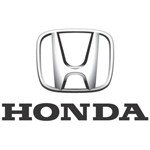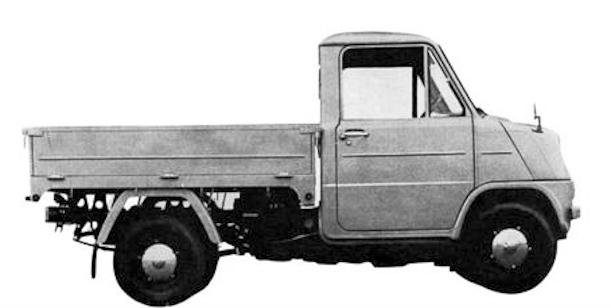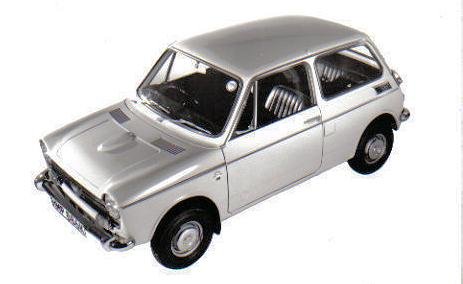Honda History
 | |
Honda Headquarters | |
| Native name | 本田技研工業株式会社 |
|---|---|
| Traded as | TYO: 7267 NYSE: HMC |
| Founded | Hamamatsu, Japan (October 1946, incorporated September 24, 1948) |
| Founders | Soichiro Honda Takeo Fujisawa |
| Headquarters | Minato, Tokyo, Japan |
| Area served | Worldwide |
Honda Motor Co., Ltd. is a Japanese public multinational corporation primarily known as a manufacturer of automobiles, motorcycles and power equipment.
Honda has been the world's largest motorcycle manufacturer since 1959,as well as the world's largest manufacturer of internal combustion engines measured by volume, producing more than 14 million internal combustion engines each year. Honda became the second-largest Japanese automobile manufacturer in 2001.Honda was the eighth largest automobile manufacturer in the world behind General Motors, Volkswagen Group, Toyota, Hyundai Motor Group, Ford, Nissan, and PSA in 2011.
Honda was the first Japanese automobile manufacturer to release a dedicated luxury brand, Acura, in 1986. Aside from their core automobile and motorcycle businesses, Honda also manufactures garden equipment, marine engines, personal watercraft and power generators, amongst others. Since 1986, Honda has been involved with artificial intelligence/robotics research and released their ASIMO robot in 2000. They have also ventured into aerospace with the establishment of GE Honda Aero Engines in 2004 and the Honda HA-420 HondaJet, which began production in 2012. Honda has three joint-ventures in China (Honda China, Dongfeng Honda, and Guangqi Honda).
History
As a young man, Honda's founder, Soichiro Honda had an interest in automobiles. He worked as a mechanic at the Art Shokai garage, where he tuned cars and entered them in races. In 1937, with financing from his acquaintance Kato Shichirō, Honda founded Tōkai Seiki (Eastern Sea Precision Machine Company) to make piston rings working out of the Art Shokai garage. After initial failures, Tōkai Seiki won a contract to supply piston rings to Toyota, but lost the contract due to the poor quality of their products. After attending engineering school without graduating, and visiting factories around Japan to better understand Toyota's quality control processes, by 1941 Honda was able to mass-produce piston rings acceptable to Toyota, using an automated process that could employ even unskilled wartime laborers.
Tōkai Seiki was placed under control of the Ministry of Commerce and Industry (called the Ministry of Munitions after 1943) at the start of World War II, and Soichiro Honda was demoted from president to senior managing director after Toyota took a 40% stake in the company. Honda also aided the war effort by assisting other companies in automating the production of military aircraft propellers. The relationships Honda cultivated with personnel at Toyota, Nakajima Aircraft Company and the Imperial Japanese Navy would be instrumental in the postwar period. A US B-29 bomber attack destroyed Tōkai Seiki's Yamashita plant in 1944, and the Itawa plant collapsed in the 1945 Mikawa earthquake, and Soichiro Honda sold the salvageable remains of the company to Toyota after the war for ¥450,000, and used the proceeds to found the Honda Technical Research Institute in October 1946. With a staff of 12 men working in a 16 m2 (170 sq ft) shack, they built and sold improvised motorized bicycles, using a supply of 500 two-stroke 50 cc Tohatsu war surplus radio generator engines. When the engines ran out, Honda began building their own copy of the Tohatsu engine, and supplying these to customers to attach their bicycles. This was the Honda Model A, nicknamed the Bata Bata for the sound the engine made. In 1949, the Honda Technical Research Institute was liquidated for ¥1,000,000, or about US$5,000 today; these funds were used to incorporate Honda Motor Co., Ltd At about the same time Honda hired engineer Kihachiro Kawashima, and Takeo Fujisawa who provided indispensable business and marketing expertise to complement Soichiro Honda's technical bent. The close partnership between Soichiro Honda and Fujisawa lasted until they stepped down together in October 1973.
The first complete motorcycle, with both the frame and engine made by Honda, was the 1949 Model D, the first Honda to go by the name Dream. Honda Motor Company grew in a short time to become the world's largest manufacturer of motorcycles by 1964.
The first production automobile from Honda was the T360 mini pick-up truck, which went on sale in August 1963.Powered by a small 356-cc straight-4 gasoline engine, it was classified under the cheaper Kei car tax bracket. The first production car from Honda was the S500 sports car, which followed the T360 into production in October 1963. Its chain-driven rear wheels pointed to Honda's motorcycle origins.
Over the next few decades, Honda worked to expand its product line and expanded operations and exports to numerous countries around the world. In 1986, Honda introduced the successful Acura brand to the American market in an attempt to gain ground in the luxury vehicle market. The year 1991 saw the introduction of the Honda NSX supercar, the first all-aluminum monocoque vehicle that incorporated a mid-engine V6 with variable-valve timing.
CEO Tadashi Kume was succeeded by Nobuhiko Kawamoto in 1990. Kawamoto was selected over Shoichiro Irimajiri, who oversaw the successful establishment of Honda of America Manufacturing, Inc. in Marysville, Ohio. Both Kawamoto and Irimajiri shared a friendly rivalry within Honda, and Irimajiri would resign in 1992 due to health issues.
Following the death of Soichiro Honda and the departure of Irimajiri, Honda found itself quickly being outpaced in product development by other Japanese automakers and was caught off-guard by the truck and sport utility vehicle boom of the 1990s, all which took a toll on the profitability of the company. Japanese media reported in 1992 and 1993 that Honda was at serious risk of an unwanted and hostile takeover by Mitsubishi Motors, who at the time was a larger automaker by volume and flush with profits from their successful Pajero and Diamante.
Kawamoto acted quickly to change Honda's corporate culture, rushing through market-driven product development that resulted in recreational vehicles such as the Odyssey and the CR-V, and a refocusing away from some of the numerous sedans and coupes that were popular with Honda's engineers but not with the buying public. The most shocking change to Honda came when Kawamoto ended Honda's successful participation in Formula One after the 1992 season, citing costs in light of the takeover threat from Mitsubishi as well as the desire to create a more environmentally-friendly company image.

1965 Honda T500F Truck
Automobiles
Honda's global lineup consists of the Fit, Civic, Accord, Insight, CR-V, CR-Z, Legend and two versions of the Odyssey, one for North America, and a smaller vehicle sold internationally. An early proponent of developing vehicles to cater to different needs and markets worldwide, Honda's lineup varies by country and may have vehicles exclusive to that region. A few examples are the latest Honda Odyssey minivan and the Ridgeline, Honda's first light-duty uni-body pickup truck. Both were designed and engineered primarily in North America and are produced there. Other example of exclusive models includes the Honda Civic five-door hatchback sold in Europe.
Honda's automotive manufacturing ambitions can be traced back to 1963, with the Honda T360, a kei car truck built for the Japanese market. This was followed by the two-door roadster, the Honda S500 also introduced in 1963. In 1965, Honda built a two-door commercial delivery van, called the Honda L700. Honda's first four-door sedan was not the Accord, but the air-cooled, four-cylinder, gasoline-powered Honda 1300 in 1969. The Civic was a hatchback that gained wide popularity internationally, but it wasn't the first two-door hatchback built. That was the Honda N360, another Kei car that was adapted for international sale as the N600. The Civic, which appeared in 1972 and replaced the N600 also had a smaller sibling that replaced the air-cooled N360, called the Honda Life that was water-cooled.
The Honda Life represented Honda's efforts in competing in the kei car segment, offering sedan, delivery van and small pick-up platforms on a shared chassis. The Life StepVan had a novel approach that, while not initially a commercial success, appears to be an influence in vehicles with the front passengers sitting behind the engine, a large cargo area with a flat roof and a liftgate installed in back, and utilizing a transversely installed engine with a front-wheel-drive powertrain.
As Honda entered into automobile manufacturing in the late 1960s, where Japanese manufacturers such as Toyota and Nissan had been making cars since before WWII, it appears that Honda instilled a sense of doing things a little differently than its Japanese competitors. Its mainstay products, like the Accord and Civic, have always employed front-wheel-drive powertrain implementation, which is currently a long held Honda tradition. Honda also installed new technologies into their products, first as optional equipment, then later standard, like anti lock brakes, speed sensitive power steering, and multi-port fuel injection in the early 1980s. This desire to be the first to try new approaches is evident with the creation of the first Japanese luxury chain Acura, and was also evident with the all aluminum, mid-engined sports car, the Honda NSX, which also introduced variable valve timing technology, Honda calls VTEC.
1971 Honda N600





